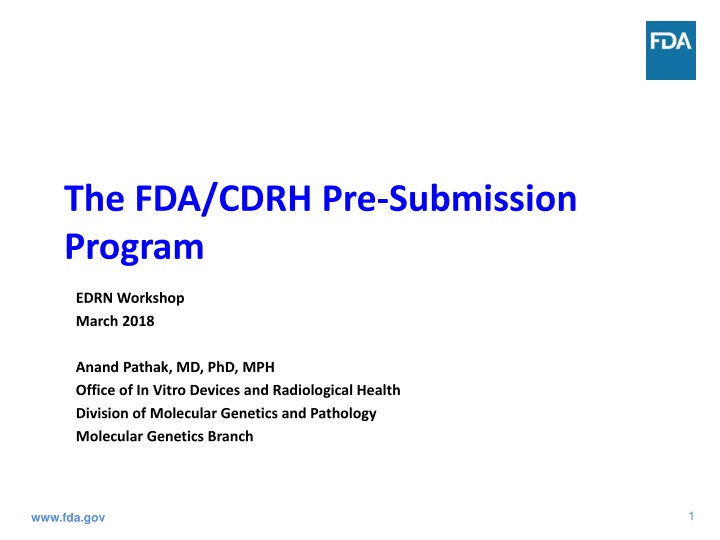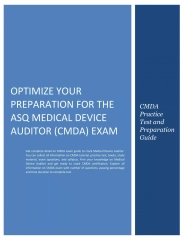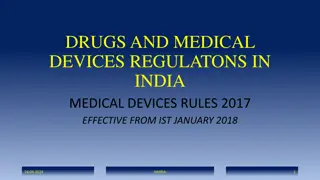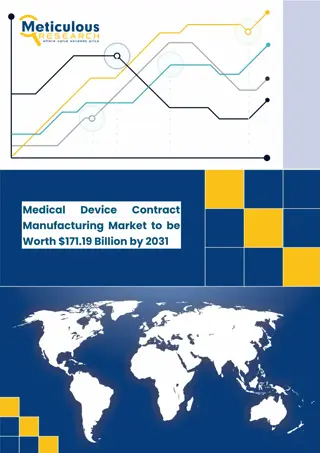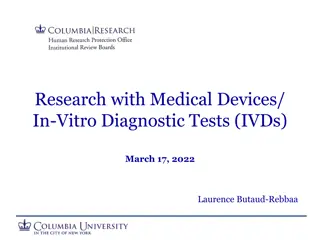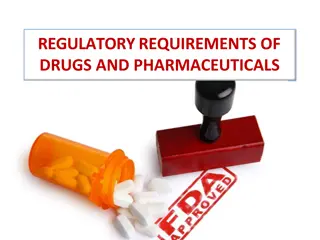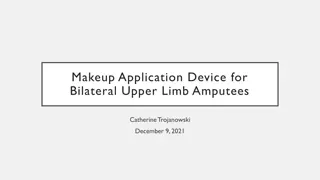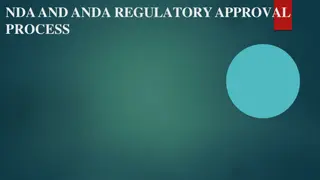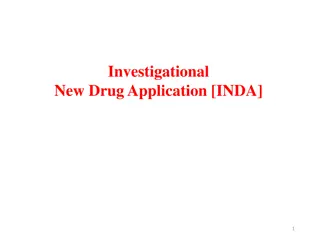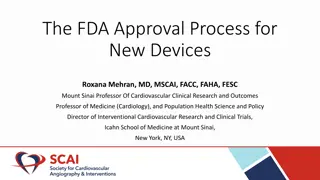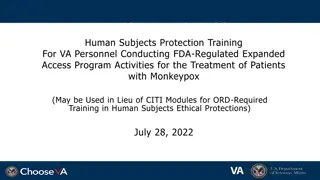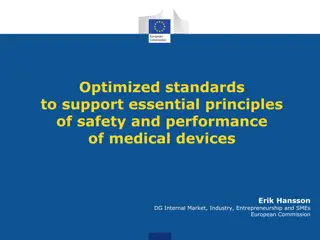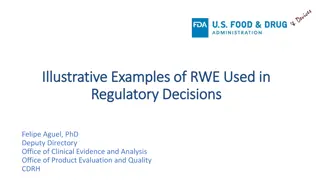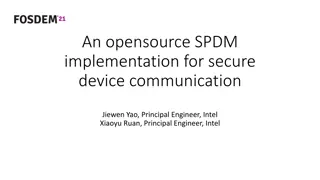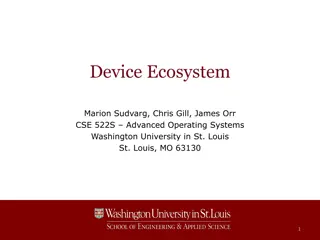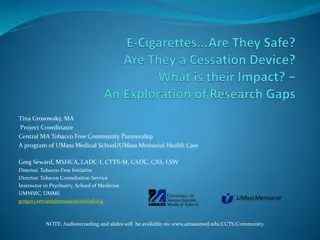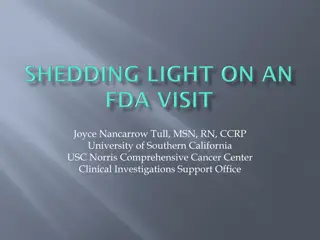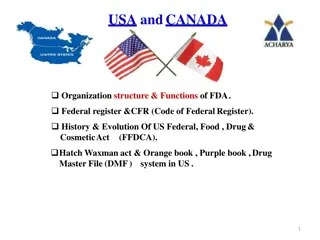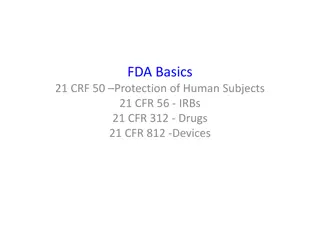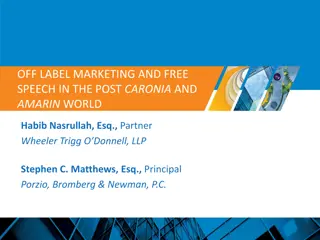FDA Pre-Submission Program for Medical Device Development
A pre-submission is a formal way to interact with the FDA early in test development, seek feedback on assay, and shape validation studies for clearance or approval. The program includes early interactions to reduce sponsor uncertainty, soliciting feedback on various submission features, and addressing specific questions for useful feedback on clinical study design and device indications. Links to information and guidance are provided for a successful interaction with the FDA.
Download Presentation

Please find below an Image/Link to download the presentation.
The content on the website is provided AS IS for your information and personal use only. It may not be sold, licensed, or shared on other websites without obtaining consent from the author.If you encounter any issues during the download, it is possible that the publisher has removed the file from their server.
You are allowed to download the files provided on this website for personal or commercial use, subject to the condition that they are used lawfully. All files are the property of their respective owners.
The content on the website is provided AS IS for your information and personal use only. It may not be sold, licensed, or shared on other websites without obtaining consent from the author.
E N D
Presentation Transcript
The FDA/CDRH Pre-Submission Program EDRN Workshop March 2018 Anand Pathak, MD, PhD, MPH Office of In Vitro Devices and Radiological Health Division of Molecular Genetics and Pathology Molecular Genetics Branch 1 www.fda.gov
What is a Pre-submission? A pre-submission is a formal way for your to interact with FDA early in your test development, ask us questions about your assay, and help shape your analytical and clinical validation studies in a way that facilitates clearance or approval. FDA feedback takes about 75 days. It is free! 2
What is a Pre-submission? Early Interaction to Reduce Sponsor Uncertainty Can address many types of sponsor questions, the more specific the better Solicit comments and feedback on features of upcoming submissions, such as analytical studies, clinical study design, intended use, statistical analysis approaches and regulatory path We have had successful submission for cancer screening tests such as Cologuard. Study design for screening tests may depend on cancer type. Early interaction can be very valuable. Work towards a win/win. Can be useful at different stages of development Future submission can be a PMA, 510(k), De Novo, or IDE Voluntary interaction with the FDA 3 www.fda.gov
Links to Information: Review the Info FDA has for You before Submitting a Pre-Submission The Pre-Submission Guidance Requests for Feedback on Medical Device Submissions: The Pre- Submission Program and Meetings with FDA Staff Final issued February 18, 2014 http://www.fda.gov/downloads/MedicalDevices/DeviceRegulationandGuidance/ GuidanceDocuments/UCM311176.pdf eCopy Program The page contains links to Guidance, video, FAQ, and tools, including a validation module https://www.fda.gov/MedicalDevices/DeviceRegulationandGuidance/Ho wtoMarketYourDevice/ucm370879.htm Optional form 3514 Be clear about what you re submitting, who you are, and whom we should contact optional because a good cover letter can have all this https://www.fda.gov/downloads/AboutFDA/ReportsManualsForms/Form s/UCM080872.pdf 4 www.fda.gov
What feedback is useful to get? Specific Questions are needed to get Specific Feedback Key Clinical Study Design Questions Useful to ask about specifics of a proposed indication for use (the IFU should dictate the study design in general) Define the population the device is intended to be used in (asymptomatic, at risk vs previously diagnosed) What is the use? Diagnose, Screen, Confirm, Monitor Sample type (e.g. DNA, RNA, microRNA, cfDNA, etc.) How can banked samples be selected without bias for clinical validation studies? Prescription, direct to consumer testing 5
What feedback is useful to get? Analytical Studies Precision Linearity/assay reportable range Limit of Detection Cross reactivity/ Interfering substances Method comparison (to the predicate or reference method) Matrix comparison Example: Does FDA agree with the proposal for use of banked samples in analytical studies described in Section X? Example: Are the proposed study designs for demonstrating precision and accuracy adequate? Traceability, Stability Controls and calibrators Reference range (in normal population) 6 www.fda.gov
What feedback is useful to get? Conducting a Study if You are Unsure and Tips When you are unsure: Has a new intended use, new technology, or new analytes Presents new clinical questions or complex data/statistical questions Presents a significantly new approach to validation Uses a predicate or reference method that is unclear or uncertain Caution: A pre-sub is not a dry run for a marketing application or IDE because the review team does not review data Should present an analytical, clinical and statistical plan, including acceptance criteria for the success for all studies. 7 www.fda.gov
Tips for Successful Meetings with FDA: How to get the most out of your pre- submission. Brand New Diagnostic Test 8
How to get the most out of your pre-submission? Provide FDA sufficient information to get a complete picture of your device, analytical study design, intended use, clinical study design and statistical analysis plans. Focus the meeting on what you want to get out of it Allow 2/3 of the time for discussion, so your presentation should be about 1/3 of the time Bring a dedicated attendee to take notes: there would be meeting minutes sent by the sponsor. You can ask for post meeting minute comments/clarifications. 9 www.fda.gov
Pre-Submissions cover a variety of interactions Pre-Submissions are one of several interactions to which FDA assigns a tracking number beginning with the letter Q Type Features Pre-Submission Opportunity for sponsor to obtain FDA feedback prior to an intended marketing application or IDE Submission Issue Meeting To discuss deficiencies identified during a premarket review Informational Meeting To share information with FDA without expecting feedback Study Risk Determinations Risk determination for a prospective study 10 www.fda.gov
Study Risk Determination Pre-submissions and IDEs IDEs: Investigational Device Exemptions An investigational device exemption (IDE) allows the investigational device to be used in a clinical study in order to collect safety and effectiveness data. 11
Key questions with respect to risk for a SRD to determine whether an IDE is needed: Note: risk is conferred largely by the possibility of erroneous results Will the results from the device be used for enrollment? Will the results from the device cause patients to forego known effective/ approved therapy? Will the results from the device cause patients to be subjected to unacceptable toxicities? Will the results from the device cause patients to undergo a potentially high-risk biopsy? 12
13 IDE approval aims to ensure that: Risks are outweighed by anticipated benefits to subjects and importance of knowledge to be gained. Informed consent is adequate. Investigation is scientifically sound. Investigational device plausibly is effective. 13
Summary Pre-submission are a mechanism for talking to the FDA early about analytical and clinical validation studies. The information that should be contained in your pre- submission has been suggested. Our response is dependent upon the information provided by you. Talk to us early for a win-win situation. 14
Questions? 15 www.fda.gov
